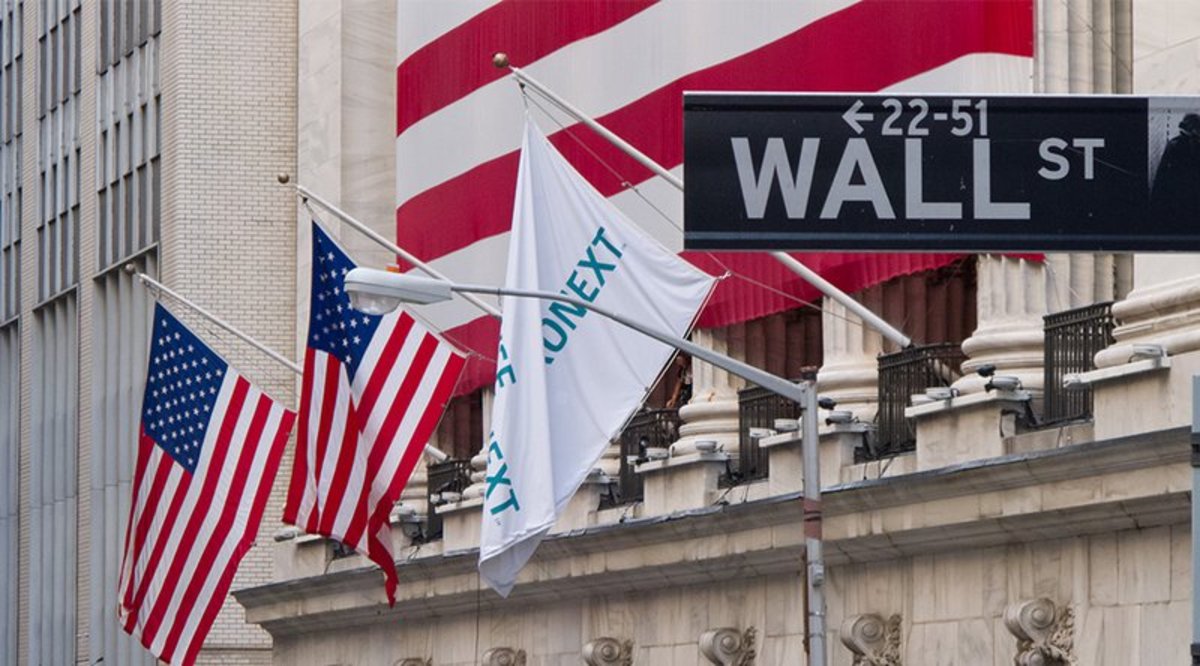Month: August 2024
China’s yuan set for longest weekly winning streak since 2021
Post Content
South African rand jumps as Fed’s Powell signals lower rates
Post Content
Dollar falls after Powell greenlights September easing
Post Content
Is the Bitcoin Bull Cycle Over?
After reaching new all-time highs earlier this year, Bitcoin has entered a multi-month period of choppy price action, leading many to wonder if the bull cycle is over. In this article, we dive deep into key metrics and trends to understand if the market is just cooling off or if we’ve already seen the peak for this cycle.
Fundamentally Overvalued?
One of the most reliable tools for gauging Bitcoin’s market cycles is the MVRV Z-Score. This metric measures the difference between Bitcoin’s market cap and its realized cap, or cost-basis for all circulating BTC, helping investors determine whether Bitcoin is over or undervalued according to this ‘fundamental’ cost of BTC.
Recent data shows that the MVRV Z-Score has demonstrated a sustained downward movement, which might suggest that Bitcoin’s upward trajectory has ended. However, a historical analysis tells a different story. During previous bull cycles, including those in 2016-2017 and 2019-2020, similar declines in the MVRV Z-Score were observed. These drawdown periods were followed by significant rallies, leading to new all-time highs. Thus, while the current downtrend may seem concerning, it’s not necessarily indicative of the bull cycle being over.
Figure 1: MVRV Z-Score typically experiences a sustained retracement during bull cycles. Access Live Chart 🔍
The MVRV Momentum Indicator helps distinguish between bull and bear cycles by applying a moving average to the raw MVRV data. It recently dipped below its moving average and turned red, which may signal the start of a bear cycle. However, historical data shows that similar dips have occurred without leading to a prolonged bear market.
Figure 2: MVRV is beneath its yearly average, but similar blips have occurred before significantly higher prices. Access Live Chart 🔍
Struggling Beneath Resistance?
Another essential metric to consider is the Short-Term Holder (STH) Realized Price, which represents the average price at which recent market participants acquired their Bitcoin. Currently, the STH Realized Price is around $63,000, slightly above the current market price. This means that many new investors are holding Bitcoin at a loss.
However, during previous bull cycles, Bitcoin’s price dipped below the STH Realized Price multiple times without signaling the end of the bull market. These dips often presented opportunities for investors to accumulate Bitcoin at discounted prices before the next leg up.
Figure 3: STH cost-basis price presenting accumulation opportunities. Access Live Chart 🔍
Investor Capitulation?
The Spent Output Profit Ratio (SOPR) assesses whether Bitcoin holders are selling at a profit or a loss. When the SOPR is below 0, it suggests that more holders are selling at a loss, which can signal market capitulation. However, recent SOPR data shows only a few instances of selling at a loss, which have been brief. This implies that there is no widespread panic among Bitcoin holders, typically seen during a bear market’s early stages.
In the past, brief periods of selling at a loss during a bull cycle have been followed by significant price increases, as seen in the 2020-2021 run-up. Therefore, the lack of sustained losses and capitulation in the SOPR data supports the view that the bull cycle is still intact.
Figure 4: Low realized losses indicate investors are willing to wait for higher prices before selling. Access Live Chart 🔍
Diminishing Returns?
There’s a theory that each Bitcoin cycle has diminishing returns, with lower percentage gains than the previous cycle. If we compare the current cycle to previous ones, it’s clear that Bitcoin has already outperformed both the 2015-2018 and 2018-2022 cycles regarding percentage gains. This outperformance might suggest that Bitcoin has gotten ahead of itself, necessitating a cooling-off period.
However, it’s also important to remember that this cooling-off period doesn’t mean the end of the bull market. Historically, Bitcoin has experienced similar pauses before resuming its upward trajectory. Thus, while we might see more sideways or even downward price action in the short term, this doesn’t necessarily indicate that the bull market is over.
Figure 5: Bitcoin continues to outpace the previous two cycles. Access Live Chart 🔍
The Hash Ribbons Buy Signal
One of the most promising indicators for Bitcoin’s future price action is the Hash Ribbons Buy Signal. This signal occurs when the 30-day moving average of Bitcoin’s hash rate crosses above the 60-day moving average, indicating that miners are recovering after a period of capitulation. The Hash Ribbons Buy Signal has historically been a reliable indicator of bullish price action in the months that follow.
Recently, Bitcoin has shown this buy signal for the first time since the halving event earlier this year, suggesting that Bitcoin could see positive price action in the coming weeks and months.
Figure 6: A recent hash ribbons buy signal. Access Live Chart 🔍
Conclusion
In summary, while there are signs of weakness in the Bitcoin market, such as the dip in the MVRV Z-Score and the STH Realized Price, these metrics have shown similar behavior in previous bull cycles without signaling the end of the market. The lack of widespread capitulation, as indicated by the SOPR and the recent Hash Ribbons Buy Signal, provides further confidence that the bull cycle is still intact.
For a more in-depth look into this topic, check out a recent YouTube video here:
Report From The DNC: Democrats Warm Up To Bitcoin And Crypto, But Offer No Policy Specifics
Bitcoin was not a big topic at the Democratic National Convention (DNC) this week. None of the speakers at the event uttered a word about the electronic cash system or other crypto assets from the event’s main stage at Chicago’s United Center. And you’d have been hard pressed to have overheard a conversation on Bitcoin or crypto anywhere in the halls of the arena either.
However, despite the fact that Democrats chose not to include Bitcoin or crypto in their official platform, some high-ranking Democrats did say this week that a Harris administration would be more pro-Bitcoin and pro-crypto than the Biden administration has been — though without offering specifics. Also, at satellite events for the conference, some Democrats spoke passionately about why their party should embrace Bitcoin and crypto.
Congressman Wiley Nickel (D-NC), a Bitcoin and crypto proponent, spoke to the idea that a Harris administration will take a different approach to the crypto industry than the Biden administration has.
“Vice President Harris has been working for and as part of the Biden-Harris administration, but now she’s coming into this campaign with her own positions on issues,” Rep. Nickel told Bitcoin Magazine explained in an interview at the convention.
“A lot has happened in the last few week’s, so she’s [only now] starting to come out with policy positions. It’s not going to be an immediate process of her coming out with things she would do differently from President Biden, but she will have different positions on issues, and she will make those known,” he added.
On Wednesday, Bloomberg reported that Vice President Harris will introduce policies to support the crypto industry if elected. This was according to her senior campaign advisor for policy, who spoke at a Bloomberg News roundtable at the convention.
The article touched on how Harris plans to engage with the cryptocurrency industry — though, again it didn’t offer any particulars on how she plans to do so. It also quoted Harris saying that she plans to “cut needless bureaucracy and unnecessary regulatory red tape” while encouraging “innovative technologies” by offering “transparent rules of the road,” though none of Harris’ quotes in the piece included any direct references to Bitcoin or crypto.
Rep. Nickel didn’t offer any specifics on what Harris’ policy might look like either, as he said he didn’t want to speak on behalf of Harris, but did note the success of the Crypto4Harris town hall, an event held on Wednesday, August 15, that featured Democratic lawmakers including Sen. Chuck Schumer (D-NY), Sen. Kirstin Gillibrand (D-NY) and Sen. Debbie Stabenow (D-MI) as well as billionaire crypto enthusiast Mark Cuban, sharing that there’s “a real sense of momentum amongst Democrats on the issue.”
Rep. Nickel also asked Bitcoin and crypto enthusiasts to heed a certain warning.
“The anti-crypto names you hear are just totally invented by folks who are trying to damage her campaign,” said Rep. Nickel about rumors of Harris bringing the likes of Brian Reese and Bharat Ramamurti, economic advisors from the Biden administration who were behind Operation Chokepoint 2.0, back into the fold.
“I don’t [give] any credence to the weird names that you hear being thrown around for big jobs. I heard Gary Gensler for Treasury Secretary. I can tell you that there’s 0% chance that he would be able to be confirmed by the Senate,” he added.
“That one is not happening.”
Pro-Bitcoin/Pro-Crypto Democrats Speak At Satellite Events
At an event held at a University of Chicago facility, Cleve Mesidor, Executive Director of the Blockchain Foundation and former Obama appointee who worked as the Director of Public Affairs at Commerce’s Economic Development Administration (EDA), spoke on a panel entitled “Democrats’ Path Forward On Digital Assets & Crypto.”
TODAY: I’m Speaking in Chicago During DNC Convention!
I’m excited to be part of this panel hosted by @ProgressChamber & @BusinessForward, which also features:@RepWileyNickel | @clydevanel | @JBSDC @paradigm| @KyleBligen
= Democrats’ Path Forward On Digital Assets & Crypto = pic.twitter.com/WIYggp1V9o
— Cleve Mesidor (@cmesi) August 21, 2024
Mesidor shared her perspective on the importance of crypto, which differed notably from the perspectives of notoriously anti-crypto Democrats like Sen. Elizabeth Warren (D-MA) and Rep. Brad Sherman (D-CA).
“Senator Liz Warren and Congressman Brad Sherman are stuck in time,” said Mesidor on the panel.
“They are so determined to fight big money, so laser focused on hitting the big guys, that their blind spot is the fact that communities of color are the largest adopters of cryptocurrency. Black and Latino communities lead national adoption of this $2 trillion market,” she added.
“Let’s be clear, consumer protection is important — we need guardrails. But if you don’t couple it with financial inclusion, you’re just saying to all of the communities who capitalized on bitcoin over the last 15 years — who made it something, who built products and services on blockchain — that you’re going to continue [supporting] policies to make sure they can’t continue to participate.”
Mesidor, a Latina herself, was emotional as she spoke, as she feels that Democrats are missing one of the major narratives around Bitcoin and crypto. At the same time, she acknowledged why they might be apprehensive to look favorably upon the crypto industry.
“Democrats have PTSD,” she told me in an interview after the panel.
“[They have] PTSD because decades ago the predatory lenders, as we call them today, came to them and said we were going to democratize finance. The internet was supposed to democratize us, right? It was supposed to be decentralized. And today, big tech is not diverse,” she added.
New York Assemblyman Clyde Vanel (D), a legislator who’s part of the New York State Black, Puerto Rican, Hispanic, and Asian Legislative Caucus, was also on the panel.
Vanel recalled first being introduced to crypto in the mid-2010s and being impressed by how it catalyzed an increase in the financial savviness of inner city youth.
“I went to different high schools and there were high school kids [who owned crypto] using the same muscles that seasoned investors do, watching markets,” recounted Vanel.
“We had a convenience store in my neighborhood [that had a] Bitcoin ATM. I went to the convenience store and saw a line of young people buying different denominations of Bitcoin — amazing,” he added.
Vanel wasn’t just happy to be seeing his constituents acquiring bitcoin because of the financial benefits they may have reaped from investing in it, but because blockchain technology also gives those from his community an alternative to the traditional financial system, which some — including his own father — don’t trust.
“My dad never used a bank, never trusted a bank,” said Vanel. “He used check cashing places.”
Vanel also touched on the remittance payment use case for Bitcoin and crypto.
“When he sent money to another country, he spent a lot of money doing so,” said Vanel, still speaking about his father “What does it mean to make sure that we make it easier for people like him to transfer value?”
Because Vanel understands well the benefits of Bitcoin and crypto, he’s glad to see Democrats starting to come around to it.
“I’m very excited that this event is happening on the heels of this campaign to show the importance of financial inclusion [via] digital technology,” said Vanel. “10 years ago, this wouldn’t have happened at the National Convention.”
Not far from the event at which Mesidor and Vanel spoke, an event entitled CryptoDNC took place, featuring appearances by Reps. Bill Foster (D-IL) and the aforementioned Wiley Nickel.
🎉 New speaker announcement!
We’re pleased to have @RepBillFoster as a featured speaker during our event next Wednesday in Chicago during the 2024 @DemConvention
Make sure to RSVP now to secure your spot!
Register: https://t.co/mJzVzchfx2
Or sign up below 👇👇 pic.twitter.com/V9lnPlgmox
— CryptoDNC (@crypto_dnc) August 16, 2024
During a fireside chat at the event, Rep. Nickel shared that not embracing crypto technology would be like not embracing the internet two and a half decades ago.
Are The Democrats Serious?
Have the Democrats really changed their tune regarding Bitcoin and crypto or are they just pandering to single-issue voters who would otherwise vote Trump because of his pro-crypto stance?
This is the question that seems to have remained on the minds of most Bitcoin and crypto enthusiasts. Part of the reason many seem hesitant to trust the Democrats’ proposed 180 on crypto may be because of the Biden administration’s support of SEC Chair Gary Gensler’s regulation by enforcement approach to the crypto industry over the last three and a half years.
Rep. Wiley Nickel seems to be making an earnest attempt to get the Democrats to “reset” their approach to crypto, but is Harris really listening? And can the likes of Assemblyman Vanel and Ms. Meridor raise their pro-crypto voices loudly enough to get the attention of a potential Harris administration?
We will have to wait and see.
Sterling climbs to highest since March 2022 against dollar
Post Content
4,500 Companies Now Pay Their Employees in Bitcoin Using Bitwage
As Bitwage celebrated its 10-year anniversary today, the company highlighted its growth in enabling Bitcoin and crypto payroll solutions. Since 2014, Bitwage has focused on bringing transparency and efficiency to global workforce payments.
Bitcoin and crypto payroll platform Bitwage announced it now serves over 4,500 registered companies and 90,000 registered users that leverage its services to pay employee salaries in Bitcoin and stablecoins.
Bitwage allows companies and individuals to send and receive payments using Bitcoin and crypto. This provides an alternative to traditional payroll and bank wire services.
There is a growing demand among employees and employers to utilize Bitcoin for payroll. For remote workers paid by international clients, receiving salaries in Bitcoin can avoid costly foreign exchange fees and delays. Meanwhile, paying contractors in Bitcoin can save companies money compared to bank wires. Bitwage handles the conversion process seamlessly on both ends.
Bitwage is on track to process over $400 million in payroll transactions this year. The company has also raised $3 million in funding from investors like Tim Draper, who said Bitwage “have been trailblazers in Bitcoin & Stablecoin integrated global payroll.”
According to Bitwage CEO Jonathan Chester, the company’s core mission is to promote financial freedom through innovative payroll solutions. After 10 years at the intersection of payroll and crypto, Bitwage aims to keep improving global workforce payments.
US Bitcoin ETFs Saw the Sixth Consecutive Day of Inflows
US spot Bitcoin exchange-traded funds recorded their sixth straight day of net inflows on August 23rd, totalling around $65 million. The sustained run of positive flows highlights the growing institutional demand for regulated Bitcoin exposure.
BlackRock’s iShares Bitcoin Trust (IBIT) let the days inflow with $75.5 million. Launched in April 2024, IBIT has quickly become the biggest spot Bitcoin ETF, with over $20 billion in assets under management.
Fidelity’s Wise Origin Bitcoin Trust took in another $9.2 million, while the ARK 21Shares Bitcoin ETF saw inflows of $7.8 million. Smaller spot bitcoin ETFs like VanEck’s and WisdomTree’s also added several million each.
However, Grayscale’s Bitcoin Trust continued to bleed funds with $28.4 million in outflows as investors migrated to cheaper options. GBTC has lost over $20 billion since converting to an ETF structure in 2024.
With assets under management crossing $20 billion, BlackRock’s IBIT has attracted major investments from Morgan Stanley, Goldman Sachs, and pension funds. Its rise has cemented Bitcoin ETFs’ spot as a gateway for institutional capital.
Overall, US spot bitcoin ETFs have seen a cumulative $250 million enter the products this week amid a resurgent Bitcoin market. The uninterrupted inflow streak signals strengthening institutional conviction after months of tepid interest.
Dollar edges lower ahead of Jackson Hole; euro, sterling higher
Post Content
Asia FX firms with Powell in focus; yen rises as BOJ’s Ueda talks rate hikes
Post Content









